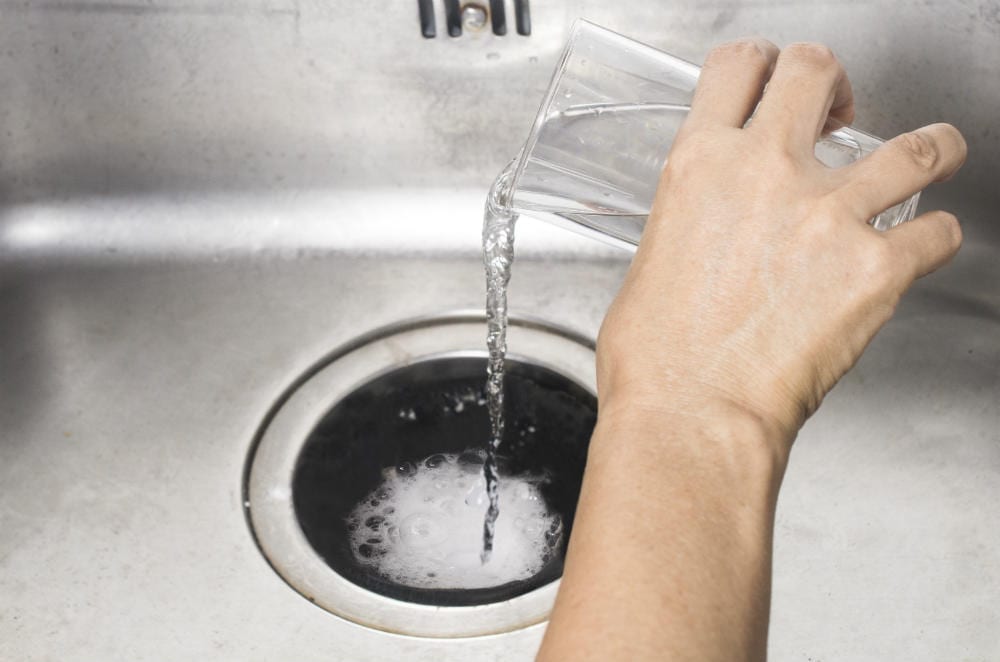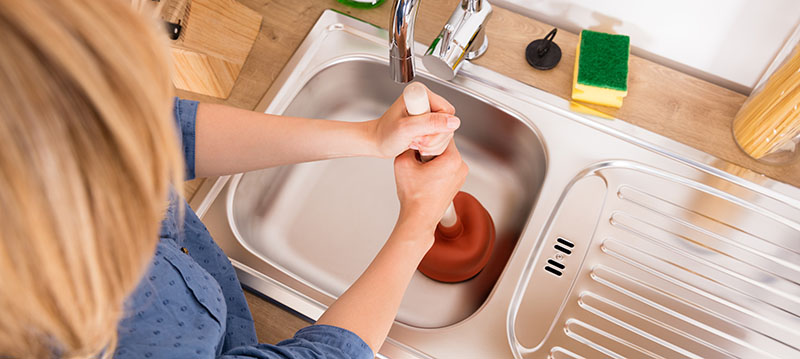When Water Doesn't Leave Away - 6 Reasons Your Kitchen Sink Is Acting Up
When Water Doesn't Leave Away - 6 Reasons Your Kitchen Sink Is Acting Up
Blog Article
We've uncovered this post pertaining to Five Ways to Fix a Slow Sink Drain down the page on the net and figured it made perfect sense to relate it with you on this site.

It's not typical for your kitchen sink to congest multiple times in one month. If your sink obstructs two times a week, there's some difficulty taking place.
A blocked cooking area drain does not just decrease your tasks, it degrades your entire plumbing system, gradually. Right here are some usual habits that motivate sink blockages, as well as just how to avoid them.
You require correct waste disposal
Reusing waste is great, however do you take notice of your organic waste also? Your kitchen ought to have 2 separate waste boxes; one for recyclable plastics as well as an additional for organic waste, which can end up being garden compost.
Having an assigned trash can will certainly help you as well as your family members avoid throwing pasta as well as various other food remnants down the tubes. Normally, these remnants absorb wetness and also become blockages.
The mistake isn't from your cooking area sink at all
Maybe the issue isn't from your cooking area sink, yet the entire drainage system. In such a situation, you might see that other sinks and drains obtain obstructed every other week. You require a professional plumbing service to fix this.
You're throwing coffee down the tubes
Made use of coffee premises and coffee beans still absorb a substantial quantity of moisture. They may seem small sufficient to throw down the drainpipe, however as time takes place they start to swell and also occupy more space.
Your coffee grounds ought to go into organic waste disposal. Whatever fraction escapes (perhaps while you're washing up) will be looked after during your regular monthly clean-up.
You have actually been consuming a great deal of oily foods
Your kitchen area sink might still get blocked despite organic waste disposal. This may be because you have a diet rich in greasy foods like cheeseburgers.
This grease layers the within pipelines, making them narrower and also even more clog-prone.
Make use of a bettor
Your pipeline had not been taken care of appropriately in the first place
If you've been doing none of the above, yet still obtain routine blockages in your kitchen sink, you ought to call a plumber. There could be an issue with exactly how your pipes were mounted.
While your plumber shows up, check for any kind of leakages or irregularities around your kitchen pipelines. Do not attempt to fix the pipelines yourself. This may create a mishap or a kitchen flood.
A person tried to wash their hair in the cooking area sink
There's a correct time and area for whatever. The kitchen sink is simply not the ideal place to clean your hair. Washing your hair in the kitchen sink will certainly make it block sooner or later unless you make use of a drain catcher.
While a drainpipe catcher may catch a lot of the fallouts, some hairs may still get through. If you have thick hair, this might be enough to reduce your drain and at some point form an obstruction.
There's more dust than your pipes can handle
If you obtain fruits directly from a ranch, you may observe more kitchen area dirt than other individuals that shop from a shopping mall. You can easily repair this by cleaning the fruits as well as veggies properly prior to bringing them into your home.You need appropriate garbage disposal
My Kitchen Sink Won’t Drain - What Should I Do?
If Your Sink Has a Garbage Disposal...
Turn on the disposal. If the disposal hums and doesn’t turn, then there’s clog in the disposal unit.
Go to your circuit breaker panel, and switch off the circuit breaker to your garbage disposal.
Back in your kitchen, double-check that your garbage disposal is off by trying to turn it on. The disposal should not move, and it should not make any noise.
Lie down underneath your sink so that you can see and access the bottom of the disposal unit. Look for a hole that looks like the head of a hex-head bolt in the center of the unit.
Place an Allen wrench inside this hole and turn it from side to side until you feel a decrease in resistance and are able to rotate the wrench completely in a single direction. This action rotates your disposal’s blade manually.
Put the wrench aside, and press the disposal unit’s reset button or switch.
Flip your garbage disposal’s circuit breaker switch back on, and turn on the unit to see if the obstruction has cleared. If it hasn’t, repeat the steps above until the obstruction is removed.
How to Unclog a Kitchen Sink Drain
If you have a double bowl sink, seal one side of the sink with an airtight lid or a second plunger before plunging the other side. Otherwise, you won’t be able to create adequate suction.
Place the cup of the plunger completely over the drain opening.
Turn on the faucet, and let the water run until it completely covers the cup of the plunger.
Start plunging by pushing the plunger down and pulling up again in order to build up suction. Make sure that the edges of the plunger stay in contact with your sink, or else you’ll lose the suction.
If you have trouble forming a seal between your sink and plunger, add petroleum jelly to the mouth of your plunger, and try again.
Plunge about five or six times before removing the plunger to see if water starts to drain properly. In some cases, you’ll even be able to feel the clog become dislodged while you plunge because suddenly there will be much less resistance. Repeat the plunging process until the clog clears.
Once water is draining properly again, run hot water down the drain for 5 minutes to help clear away grease, grime, and debris from the clog. https://www.plumbingjoint.com/blog/2019/august/my-kitchen-sink-won-t-drain-what-should-i-do-/

My Kitchen Sink Won’t Drain - What Should I Do?
If Your Sink Has a Garbage Disposal...
How to Unclog a Kitchen Sink Drain
https://www.plumbingjoint.com/blog/2019/august/my-kitchen-sink-won-t-drain-what-should-i-do-/
Do you enjoy reading up on Five Ways to Fix a Slow Sink Drain? Create feedback directly below. We'd be interested to listen to your responses about this posting. Hoping to see you back again later on. Are you aware of anybody else who is fascinated by the topic? Take a moment to share it. We love reading our article about Five Ways to Fix a Slow Sink Drain.
Visit
Report this page